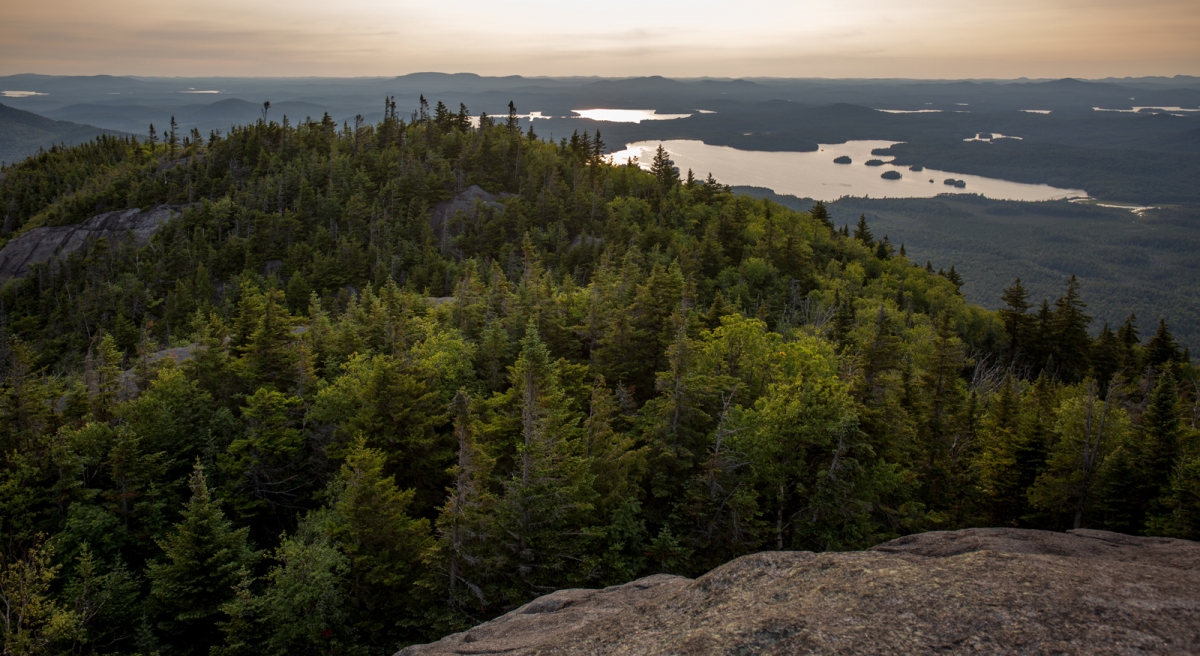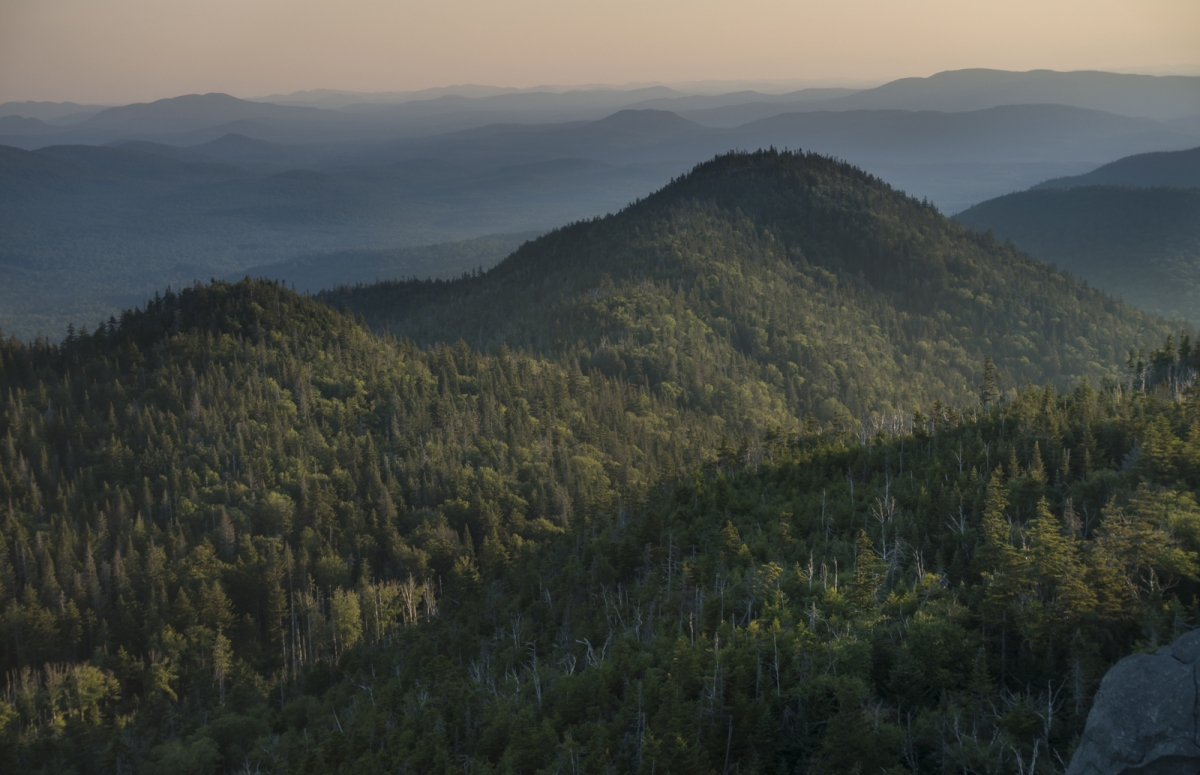Earn Some Bragging Rights: Hike the Saranac 6
When it comes to Adirondack hiking, you’ve likely heard of the 46 High Peaks, mountains over 4,000 feet in elevation, that dot all corners of the six-million-acre park. And you also may have heard of the Adirondack 46ers, a legendary club of hikers who have met the grueling requirement of summiting all 46 of those peaks. Well, think of the Saranac 6 as the friendlier, more approachable little sister to the 46 High Peaks. Not only are these mountains more forgiving in terms of elevation – though just as rewarding, with sprawling postcard views – they’re also a way easier club to get into.
A Peek at the Peaks
Mount Baker: 2,452 feet
With a trailhead right off Forest Hill Avenue, Baker is the best 6er to tackle first. The steep-but-short route (.9 miles) features nice ledges and lookouts over Saranac Lake before ending at the wooded summit with clearings that lead to views of McKenzie Mountain, the High Peaks, and Lake Flower.

St. Regis Mountain: 2,874 feet
A fire tower marks the bald summit of this mountain, accessible via a 3.3-mile trail that travels through woods and over gigantic glacial rock to vantages of Upper and Lower Saranac Lake and Upper and Lower Saint Regis Lake.
Haystack Mountain: 2,878 feet
Not to be confused with Mount Haystack (one of the hardest High Peaks), this peak features open hardwood forests, brooks, and cliffs and ledges. The 3.3-mile trail (one way) includes mellow sections as well as a series of steep pitches before reaching summit views of Whiteface, Mount Marcy, Algonquin Peak, and the Seward Range.
 Scarface Mountain: 3,054 feet
Scarface Mountain: 3,054 feet
Located just outside of Saranac Lake in Ray Brook, Scarface’s forested summit doesn’t offer much in terms of views, but there’s still plenty to see along 3.8-mile trail to the top, including old railroad tracks, dense stands of forest, a memorial bench, and a beautiful marshy area home to several bird species.
Ampersand Mountain: 3,353 feet
Ampersand is best known for the 360-degree views from its open summit. Starting off the main highway of Route 3, the first half of the 2.7-mile route is fairly easy before becoming a relentless climb to the top that will leave your calves screaming.
McKenzie Mountain: 3,822 feet
Home to a six-mile stretch of the famous Jackrabbit Ski Trail, McKenzie can be tackled via a few approaches. The most common is 5.3-mile trek from Route 86 that includes a half mile of steep, often wet, and eroded trail (so be aware of your footing), as well as several false summits.
What It Takes to Become a Saranac 6er
It’s simple: Bag all six in your lifetime, which entails hiking a grand total of 30 miles and an elevation gain of 8,000 feet. Once you do, you can apply to the village of Saranac Lake to receive an official “6er” member number, as well as a hiking patch – of which three are available. Those who climb all six over any period of time earn “The 6er” patch; those who climb all in the winter months earn the “Winter 6er” patch; and those who climb all within 24 consecutive hours take home “The Ultra 6er” patch.
Official 6ers Get to Ring the Bell
Once you summit all six peaks, you’re entitled to ring the famous 6er bell, which hangs in Berkeley Green right next to Hotel Saranac. But beware: Those who sound the bell falsely are said to suffer the Kiwassa Curse.
Or Try the Tupper Lake Triad
If summiting every 6er seems out of reach during your stay, you can set your sights on a much easier challenge: the Tupper Lake Triad, which includes summiting Coney Mountain, Goodman Mountain, and Mount Arab in the Tupper Lake Region (20 miles southwest of Saranac Lake). All three peaks vary in elevation between 2,100 to 2,500 feet and, when combined, feature only seven-plus miles of hiking and can completed in just one day.
